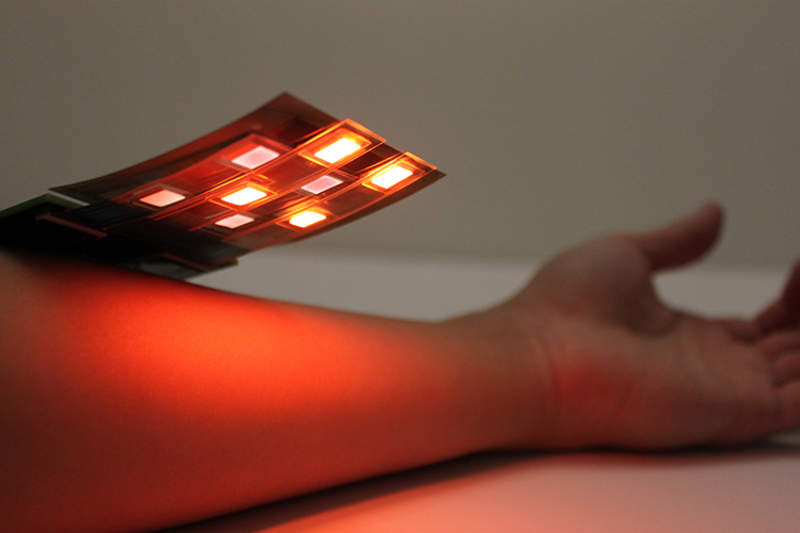
Engineers at the University of California, Berkeley (UC Berkeley) have created a new sensor to map blood-oxygen levels over large areas of skin, tissue and organs.
As oxygen is important for healing of injuries, researchers expect that the mapping sensor would enable real-time monitoring of wound healing.
Contrary to bulky fingertip oximeters, the new sensor is lightweight, thin and flexible. It consists of organic electronics printed on bendable plastic and can be placed anywhere on the skin.
The sensor can identify blood-oxygen levels at nine points in a grid. It is expected to facilitate mapping of skin graft oxygenation and monitoring of oxygen levels in transplanted organs, among others.
UC Berkeley electrical engineering and computer sciences professor Ana Claudia Arias said: “All medical applications that use oxygen monitoring could benefit from a wearable sensor.
“Patients with diabetes, respiration diseases and even sleep apnoea could use a sensor that could be worn anywhere to monitor blood-oxygen levels 24/7.”
How well do you really know your competitors?
Access the most comprehensive Company Profiles on the market, powered by GlobalData. Save hours of research. Gain competitive edge.

Thank you!
Your download email will arrive shortly
Not ready to buy yet? Download a free sample
We are confident about the unique quality of our Company Profiles. However, we want you to make the most beneficial decision for your business, so we offer a free sample that you can download by submitting the below form
By GlobalDataCurrent oximeters contain light-emitting diodes (LEDs) that shine red and near-infrared light through the skin and detect the ratio of transmitted light. However, these devices work on partially transparent body areas.
For the new mapping sensor, the researchers combined the concepts of reflected light and transmitted light in order to enable its use anywhere on the body. It has an array of alternating red and near-infrared organic LEDs and organic photodiodes.
When tested on the forehead of a volunteer, the capability of the sensor to track the overall blood-oxygen levels was found to be similar to that of a standard fingertip oximeter.







